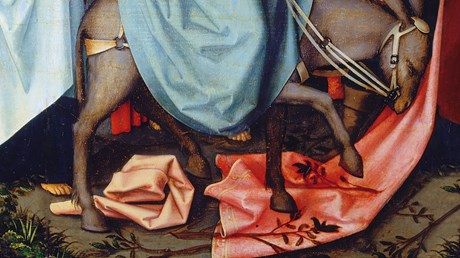For his entry into Jerusalem, Jesus picked a symbol of lowliness rather than military might.

Christian churches throughout the world will begin our holiest week of the year on what is popularly known as Palm Sunday. It commemorates one of the few events in the life of Jesus recorded in all four gospel stories: his entry into Jerusalem, followed by a raucous and warm welcome and a lot of waving branches. (Only John 12:13 mentions they were palms.) In Israel today, churches still reenact the journey from the Mount of Olives to Jerusalem—the route supposedly taken by Jesus all those centuries ago.
As a kid, even in the nonliturgical world of the Black Baptist tradition, I recall receiving my palm branch and dutifully marching into the sanctuary with a palm in one hand and my unintelligible King James Bible in the other. This year on Palm Sunday, I will be the adult trying to make sure my children don’t use the palms as weapons to tickle and annoy their siblings.
As I study this story in Scripture, I’m struck by the fact that the primary symbol for this day—a palm—was not chosen by Jesus.
John writes, “They took palm branches and went out to meet him” (John 12:13). Why did the crowd choose palm branches? It could simply have been that palms were nearby. But history tells us there might have been a deeper reason: Those plants were symbolically linked to military victories and Messiahship.
A generation before Jesus, when Simon Maccabee drove Israel’s enemies out Jerusalem, people celebrated by waving palm branches:
On the twenty-third day of the second month, in the one hundred seventy-first year, the Jews entered it with praise and palm branches, and with harps and cymbals and stringed instruments, and with hymns and songs, because a great enemy had been crushed and removed ...
from Christianity Today Magazine
Umn ministry


.gif)

.gif)
.gif)
